-
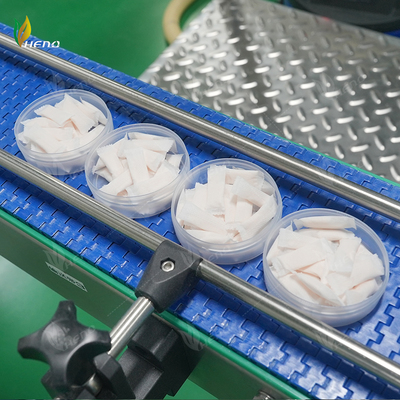 3mg nicotinezakjes
3mg nicotinezakjesContractproductiebedrijf voor 3mg nicotinezakjes
-
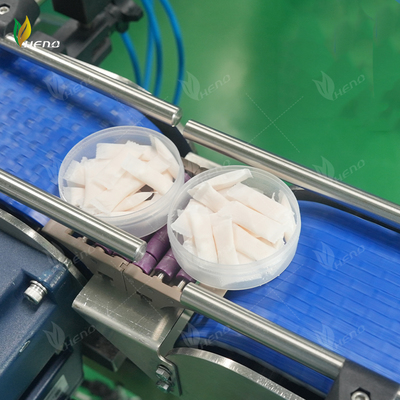 6mg nicotinezakjes
6mg nicotinezakjes6mg nicotinezakjes contractproductiebedrijf
-
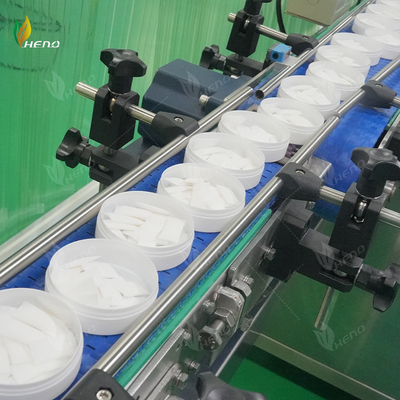 9mg nicotinezakjes
9mg nicotinezakjesContractproductiebedrijf voor 9mg nicotinezakjes
-
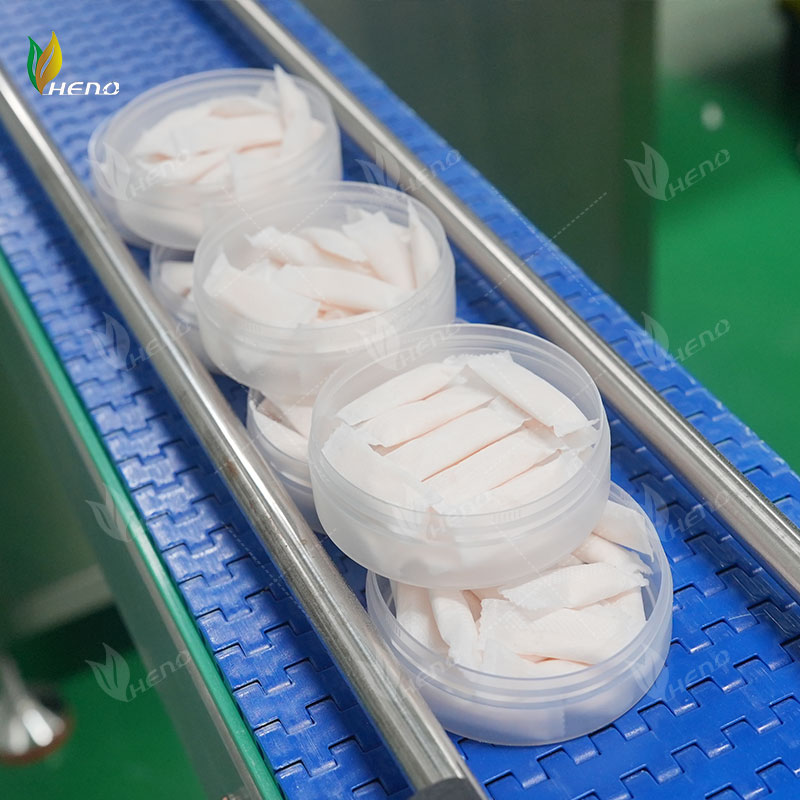 12-30 mg nicotinezakjes
12-30 mg nicotinezakjesContractproductiebedrijf voor 12-30mg nicotinezakjes
-
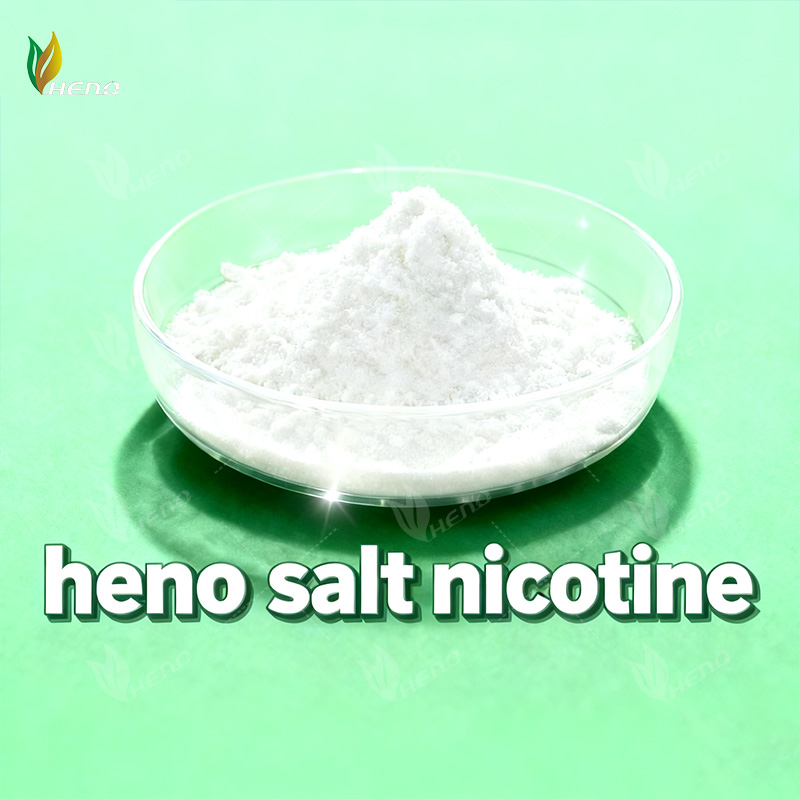 nicotine zout fabrikanten
nicotine zout fabrikantenvast nicotinezout
-
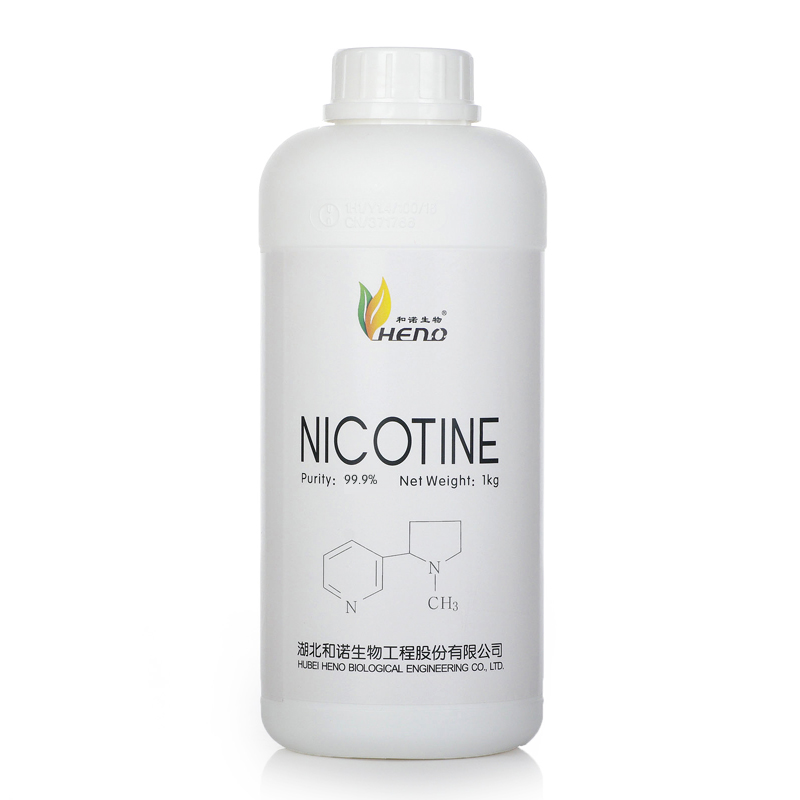 Nicotine Patch Pure
Nicotine Patch PureProductomschrijving Engelse naam: Nicotine, L-nicotine Planten Latijnse naam: Nicotiana tabacum L. CAS: 54-11-5 Internationale code: 61868 Analysemethode: HPLC Molecuulformule: C10H14N2 Chemische naam: 1-methyl-2- (3-pyridyl) pyrrolidine Uiterlijk: kleurloos en helder formulewicht: 162.23 Uiterlijk: kleurloze olieachtige vloeistof Opslag: onder stikstof, in een luchtdichte verpakking op 4 ° C of lager, beschermd tegen licht. Inhoud: 90% nicotine, 95% nicotine, 98% nicotine, 99% nicotine, 99.5% nicotine, 99.9% nicotine toepassingen 1. Toegepast in bio-pesticide. Het kan worden gebruikt voor het produceren van bio-pesticide met een hoge effectieve, lage toxiciteit en lage residu's. 2. Toegepast in medische gebied. Het kan worden gebruikt om de ziekte van Alzheimer te behandelen. 3. Toegepast in rook stoppen. Het kan worden gebruikt voor het maken van e-juice, nicotinepleisters en andere rookverbrandende producten 4. Gebruikt als additief voor de vervaardiging van producten voor voeding, voeding en gezondheidszorg, aroma's en geuren, cosmetica en dierenvoeders. 5. Gebruikt in Nicotine vervangingstherapie. Hoge zuiverheid kan chian-roker helpen stoppen met roken en kan ook voorkomen dat niet-rokers beginnen met roken. Onze diensten 1: monsters: gratis 2: OEM: op maat gemaakte afdrukken 3: documenten: MSDS, USP-rapport, certificering voor veilig transport van chemische goederen. Enshi HENO BIOLOGICA ENGINEERING CO., LTD bevindt zich in Enshi Tujia en Miao Autonome Prefectuur, de mysterieuze breedtegraad 30 graden over de hele Enshi, getiteld "E Xi Linhai", "Central China Drug Storehouse," "tobacco kingdom", Enshi HENO BIOLOGICA ENGINEERING CO., LTD werd opgericht in oktober 2010, is een verzameling van productontwikkeling voor nicotine en derivaten; productie en verkoop van high-tech bedrijven. Het bedrijf richtte zich op het onderzoek en de ontwikkeling van nicotine, met name hoge zuiverheid nicotineproducten. gerelateerde producten Voorwaarden Betaling: T / T Levertijd: Producten worden verzonden binnen 2 werkdagen nadat we de volledige betaling hebben ontvangen. MOQ: 1L Verpakking: gefluoreerde fles Opslag: onder stikstof 4-5 graden en vermijd zonlicht Engelse synoniemen: (S) - (-) - Nicotine; (-) - 1-methyl-2- (3-pyridyl) pyrrolidine; 3- (1-methyl-2-pyrrolidinyl) pyridine; Nicotine; 3 - [(2S) -1-methylpyrrolidine-2-yl] pyridine; 3 - [(2R) -1-methylpyrrolidine-2-yl] pyridine; (2S) -1-methyl-2-pyridin-3-ylpyrrolidinium; (2R) -1-methyl-2-pyridin-3-ylpyrrolidinium Stop met roken zodra u met uw behandeling met nicotine begint. Doorgaan met roken tijdens het gebruik van dit medicijn kan gevaarlijk zijn. Praat met uw arts over welke vorm van nicotine het beste voor u is. U kunt de neusspray misschien niet gebruiken als u last hebt van sinussen; de kauwgom of zuigtabletten als u tand- of mondproblemen heeft; of de pleister als u bepaalde huidaandoeningen heeft. Nicotine kan een ongeboren baby schaden. Gebruik dit medicijn niet als u zwanger bent of van plan bent zwanger te worden. Wij bieden de beste nicotine voor de beste e-liquid-fabrikanten! HENO-nicotine is de beste keuze! Van harte welkom om contact met ons op!
-
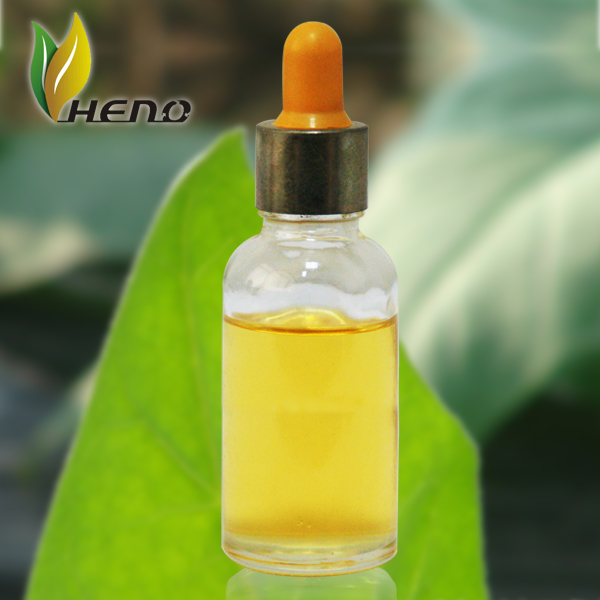 elektronische sigaret pure nicotine vloeibare leverancier
elektronische sigaret pure nicotine vloeibare leverancierENSHI HENO BIOLOGICA ENGINEERING CO., LTD gelegen in Enshi Tujia & Miao autonome prefectuur, de mysterieuze latitude 30 graden over het hele Enshi, is het recht van "E Xi Linhai" , "Centraal China Drug pakhuis," "tabak Koninkrijk", ENSHI HENO BIOLOGICA ENGINEERING CO., LTD werd opgericht in oktober 2010, is een verzameling van nicotine en derivaten productontwikkeling, productie en verkoop van high-tech bedrijven. Het bedrijf gericht op het onderzoek en de ontwikkeling van nicotine, met name hoge zuiverheid nicotine producten. productbeschrijving Engelse naam: Nicotine, L-nicotine planten Latijnse naam: Nicotiana tabacum L. CAS:54-11-5 International Code: 61868 analyse methode: HPLC moleculaire formule: C10H14N2 Chemischenaam: 1-methyl-2-(3-pyridyl) pyrrolidine uiterlijk : kleurloos en duidelijke formule gewicht: 162.23 verschijning: kleurloze, olieachtige vloeistof opslag: onder stikstof, in een luchtdichte container op 4℃ of onder, beschermd tegen licht. inhoud: 90% nicotine, nicotine van 95%, 98% nicotine, 99% nicotine, 99.5%nicotine,99.9%nicotine verwante producten toepassingen 1. toegepaste in bio-bestrijdingsmiddelen. Het kan worden gebruikt voor het produceren van bio-bestrijdingsmiddelen van hoge-effectief, lage toxiciteit en laag residu. 2. toegepaste op medisch gebied. Het kan worden gebruikt voor de behandeling van Alzheimer. 3. toegepaste in rook stoppen. Het kan worden gebruikt om de gemaakte e-juice, nicotinepleisters en andere roken stoppen producten 4. Wordt gebruikt als additief voor de vervaardiging van levensmiddelen, voeding en gezondheidszorg producten, smaken en geuren, cosmetica en dierlijke feeds. 5. gebruikt in Nicotine vervangende therapie. Hoge zuiverheid chian-roker stoppen met roken kan helpen en niet-roker start roken kunt voorkomen. voorwaarden en omstandigheden betaling: T/T levertijd: producten worden verstuurd in 2 werkdagen na ontvangst van volledige betaling. MOQ:1 L verpakking: gefluoreerde fles opslag: onder stikstof 4-5 graden en avoide sunshine onze SERIVICES 1:Samples: gratis 2:OEM: aangepaste afdrukken 3 : documenten: spier-en skeletaandoeningen, USP verslag, certificering voor veilig vervoer van chemische goederen. Engels synoniemen: (S)-(-) - Nicotine; (-)-1-methyl-2-(3-pyridyl)-pyrrolidine; 3-(1-methyl-2-pyrrolidinyl) pyridine; Nicotine; 3-[(2S) -1-methylpyrrolidin-2-yl] pyridine; 3-[(2R) -1-methylpyrrolidin-2-yl] pyridine; (2S)-1-methyl-2-pyridin-3-ylpyrrolidinium; (2R)-1-methyl-2-pyridin-3-ylpyrrolidinium Stop roken, zodra u uw behandeling met nicotine begint. Blijven roken tijdens het gebruik van deze drug kan gevaarlijk zijn. praat met uw arts over welke vorm van nicotine voor u best is. U mogelijk niet kunnen gebruiken van de neusspray hebt u sinus problemen; het tandvlees of de ruiten als je tandheelkundige of mond problemen; of de patch hebt u bepaalde huidaandoeningen. Nicotine kan schadelijk voor een ongeboren baby. U moet niet neem deze medicatie als u zwanger bent of van plan om zwanger te worden. wij bieden de beste nicotine voor de beste e-liquid fabrikanten! HENO nicotine is uw beste keus! harte welkom om contact met ons op!
-
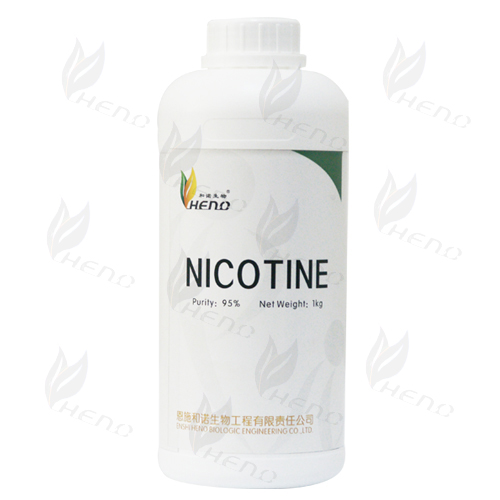 Tabak E-vloeistof extractie zuiverheid nicotine groothandel
Tabak E-vloeistof extractie zuiverheid nicotine groothandelENSHI HENO BIOLOGICA ENGINEERING CO., LTD gelegen in Enshi Tujia & Miao autonome prefectuur, de mysterieuze latitude 30 graden over het hele Enshi, is het recht van "E Xi Linhai" , "Centraal China Drug pakhuis," "tabak Koninkrijk", ENSHI HENO BIOLOGICA ENGINEERING CO., LTD werd opgericht in oktober 2010, is een verzameling van nicotine en derivaten productontwikkeling, productie en verkoop van high-tech bedrijven. Het bedrijf gericht op het onderzoek en de ontwikkeling van nicotine, met name hoge zuiverheid nicotine producten. productbeschrijving Engelse naam: Nicotine, L-nicotine planten Latijnse naam: Nicotiana tabacum L. CAS:54-11-5 International Code: 61868 analyse methode: HPLC moleculaire formule: C10H14N2 Chemischenaam: 1-methyl-2-(3-pyridyl) pyrrolidine uiterlijk : kleurloos en duidelijke formule gewicht: 162.23 verschijning: kleurloze, olieachtige vloeistof opslag: onder stikstof, in een luchtdichte container op 4℃ of onder, beschermd tegen licht. inhoud: 90% nicotine, nicotine van 95%, 98% nicotine, 99% nicotine, 99.5%nicotine,99.9%nicotine verwante producten toepassingen 1. toegepaste in bio-bestrijdingsmiddelen. Het kan worden gebruikt voor het produceren van bio-bestrijdingsmiddelen van hoge-effectief, lage toxiciteit en laag residu. 2. toegepaste op medisch gebied. Het kan worden gebruikt voor de behandeling van Alzheimer. 3. toegepaste in rook stoppen. Het kan worden gebruikt om de gemaakte e-juice, nicotinepleisters en andere roken stoppen producten 4. Wordt gebruikt als additief voor de vervaardiging van levensmiddelen, voeding en gezondheidszorg producten, smaken en geuren, cosmetica en dierlijke feeds. 5. gebruikt in Nicotine vervangende therapie. Hoge zuiverheid chian-roker stoppen met roken kan helpen en niet-roker start roken kunt voorkomen. voorwaarden en omstandigheden betaling: T/T levertijd: producten worden verstuurd in 2 werkdagen na ontvangst van volledige betaling. MOQ:1 L verpakking: gefluoreerde fles opslag: onder stikstof 4-5 graden en avoide sunshine onze SERIVICES 1:Samples: gratis 2:OEM: aangepaste afdrukken 3 : documenten: spier-en skeletaandoeningen, USP verslag, certificering voor veilig vervoer van chemische goederen. Engels synoniemen: (S)-(-) - Nicotine; (-)-1-methyl-2-(3-pyridyl)-pyrrolidine; 3-(1-methyl-2-pyrrolidinyl) pyridine; Nicotine; 3-[(2S) -1-methylpyrrolidin-2-yl] pyridine; 3-[(2R) -1-methylpyrrolidin-2-yl] pyridine; (2S)-1-methyl-2-pyridin-3-ylpyrrolidinium; (2R)-1-methyl-2-pyridin-3-ylpyrrolidinium Stop roken, zodra u uw behandeling met nicotine begint. Blijven roken tijdens het gebruik van deze drug kan gevaarlijk zijn. praat met uw arts over welke vorm van nicotine voor u best is. U mogelijk niet kunnen gebruiken van de neusspray hebt u sinus problemen; het tandvlees of de ruiten als je tandheelkundige of mond problemen; of de patch hebt u bepaalde huidaandoeningen. Nicotine kan schadelijk voor een ongeboren baby. U moet niet neem deze medicatie als u zwanger bent of van plan om zwanger te worden. wij bieden de beste nicotine voor de beste e-liquid fabrikanten! HENO nicotine is uw beste keus! harte welkom om contact met ons op!
-
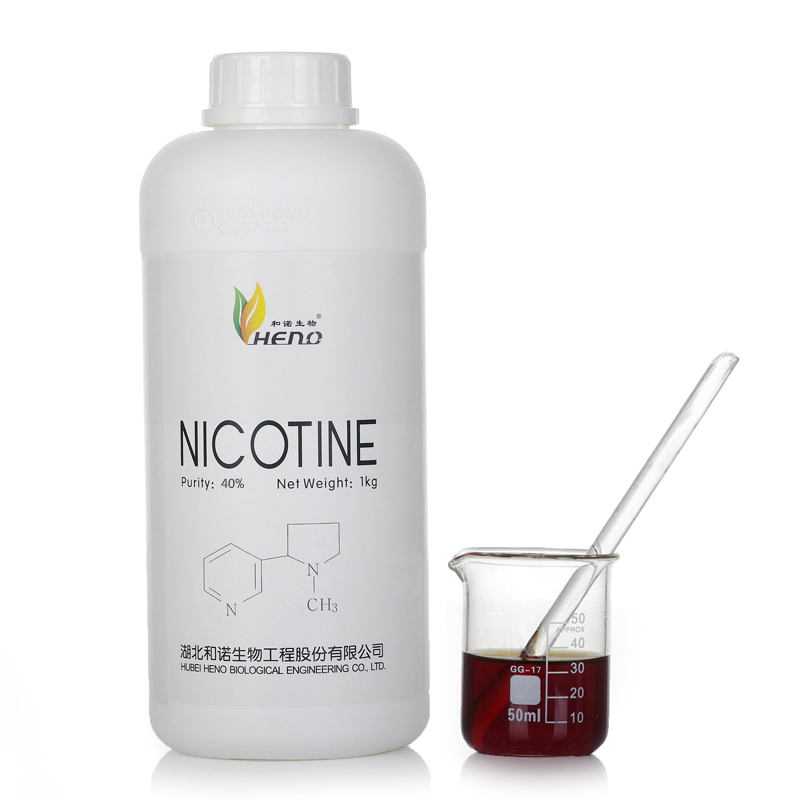 bio-bestrijdingsmiddelen pure nicotine vloeibare leverancier
bio-bestrijdingsmiddelen pure nicotine vloeibare leverancierENSHI HENO BIOLOGICA ENGINEERING CO., LTD gelegen in Enshi Tujia & Miao autonome prefectuur, de mysterieuze latitude 30 graden over het hele Enshi, is het recht van "E Xi Linhai" , "Centraal China Drug pakhuis," "tabak Koninkrijk", ENSHI HENO BIOLOGICA ENGINEERING CO., LTD werd opgericht in oktober 2010, is een verzameling van nicotine en derivaten productontwikkeling, productie en verkoop van high-tech bedrijven. Het bedrijf gericht op het onderzoek en de ontwikkeling van nicotine, met name hoge zuiverheid nicotine producten. productbeschrijving Engelse naam: Nicotine, L-nicotine planten Latijnse naam: Nicotiana tabacum L. CAS:54-11-5 International Code: 61868 analyse methode: HPLC moleculaire formule: C10H14N2 Chemischenaam: 1-methyl-2-(3-pyridyl) pyrrolidine uiterlijk : kleurloos en duidelijke formule gewicht: 162.23 verschijning: kleurloze, olieachtige vloeistof opslag: onder stikstof, in een luchtdichte container op 4℃ of onder, beschermd tegen licht. inhoud: 90% nicotine, nicotine van 95%, 98% nicotine, 99% nicotine, 99.5%nicotine,99.9%nicotine verwante producten toepassingen 1. toegepaste in bio-bestrijdingsmiddelen. Het kan worden gebruikt voor het produceren van bio-bestrijdingsmiddelen van hoge-effectief, lage toxiciteit en laag residu. 2. toegepaste op medisch gebied. Het kan worden gebruikt voor de behandeling van Alzheimer. 3. toegepaste in rook stoppen. Het kan worden gebruikt om de gemaakte e-juice, nicotinepleisters en andere roken stoppen producten 4. Wordt gebruikt als additief voor de vervaardiging van levensmiddelen, voeding en gezondheidszorg producten, smaken en geuren, cosmetica en dierlijke feeds. 5. gebruikt in Nicotine vervangende therapie. Hoge zuiverheid chian-roker stoppen met roken kan helpen en niet-roker start roken kunt voorkomen. Engels synoniemen: (S)-(-) - Nicotine; (-)-1-methyl-2-(3-pyridyl)-pyrrolidine; 3-(1-methyl-2-pyrrolidinyl) pyridine; Nicotine; 3-[(2S) -1-methylpyrrolidin-2-yl] pyridine; 3-[(2R) -1-methylpyrrolidin-2-yl] pyridine; (2S)-1-methyl-2-pyridin-3-ylpyrrolidinium; (2R)-1-methyl-2-pyridin-3-ylpyrrolidinium Stop roken, zodra u uw behandeling met nicotine begint. Blijven roken tijdens het gebruik van deze drug kan gevaarlijk zijn. praat met uw arts over welke vorm van nicotine voor u best is. U mogelijk niet kunnen gebruiken van de neusspray hebt u sinus problemen; het tandvlees of de ruiten als je tandheelkundige of mond problemen; of de patch hebt u bepaalde huidaandoeningen. Nicotine kan schadelijk voor een ongeboren baby. U moet niet neem deze medicatie als u zwanger bent of van plan om zwanger te worden. wij bieden de beste nicotine voor de beste e-liquid fabrikanten! HENO nicotine is uw beste keus! harte welkom om contact met ons op!
-
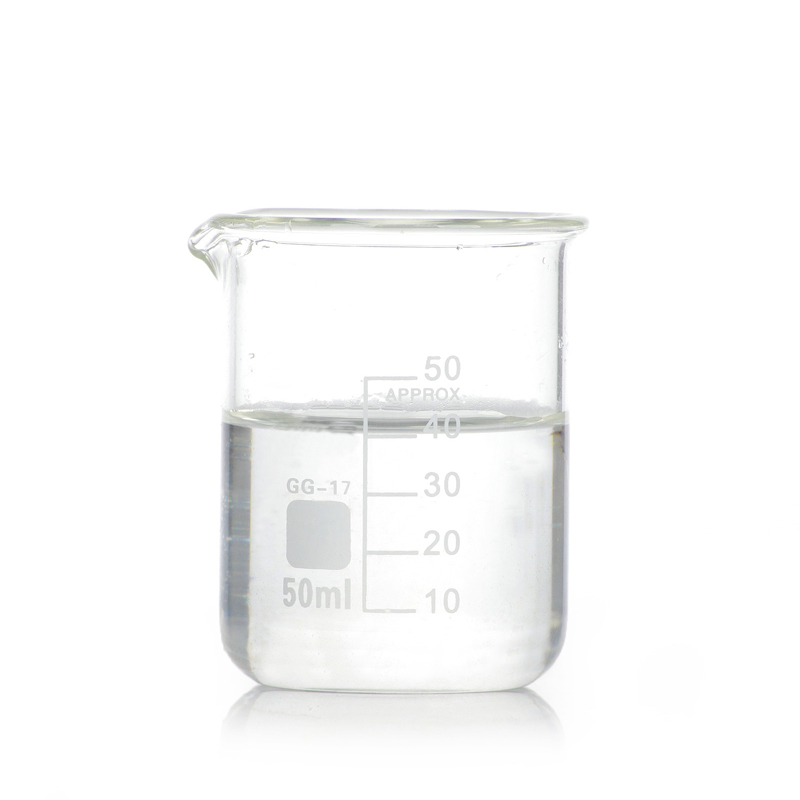 USP hoge zuiverheid nicotine bedrijf
USP hoge zuiverheid nicotine bedrijfENSHI HENO BIOLOGICA ENGINEERING CO., LTD gelegen in Enshi Tujia & Miao autonome prefectuur, de mysterieuze latitude 30 graden over het hele Enshi, is het recht van "E Xi Linhai" , "Centraal China Drug pakhuis," "tabak Koninkrijk", ENSHI HENO BIOLOGICA ENGINEERING CO., LTD werd opgericht in oktober 2010, is een verzameling van nicotine en derivaten productontwikkeling, productie en verkoop van high-tech bedrijven. Het bedrijf gericht op het onderzoek en de ontwikkeling van nicotine, met name hoge zuiverheid nicotine producten. productbeschrijving Engelse naam: Nicotine, L-nicotine planten Latijnse naam: Nicotiana tabacum L. CAS:54-11-5 International Code: 61868 analyse methode: HPLC moleculaire formule: C10H14N2 Chemischenaam: 1-methyl-2-(3-pyridyl) pyrrolidine uiterlijk : kleurloos en duidelijke formule gewicht: 162.23 verschijning: kleurloze, olieachtige vloeistof opslag: onder stikstof, in een luchtdichte container op 4℃ of onder, beschermd tegen licht. inhoud: 90% nicotine, nicotine van 95%, 98% nicotine, 99% nicotine, 99.5%nicotine,99.9%nicotine gerelateerde producten waarom HENO kiezen? 1. Eigenaar van een stabiele en professionele R & D team; 2. Nicotine is natuurlijke gewonnen uit afval tabaksplanten, dat is een goede manier te recyclen van afval. 3. Onze pure nicotine 99,9% kan bereiken, voldoet aan standaard USP. 4. Zelf de ervaring om te exporteren van nicotine legaal. 5:Test rapport en certificaat verleden TRANSACTIEGEGEVENS voorwaarden en omstandigheden betaling: T/T levertijd : producten worden verstuurd in 2 werkdagen na ontvangst van volledige betaling. MOQ:1 L verpakking: gefluoreerde fles opslag: onder stikstof 4-5 graden en avoide sunshine onze SERIVICES 1:Samples: gratis 2:OEM : afdrukken aangepast 3:documents: spier-en skeletaandoeningen, USP verslag, certificering voor veilig vervoer van chemische goederen. hoge zuiverheid nicotine, tabak absolute, organisch selenium samengestelde microbiële meststoffen is ons belangrijkste product, sterke o & o ondersteuning, hoge kwaliteit, redelijke prijs, snelle levering vermogen en kwaliteit van de dienstverlening, zodat vele binnenlandse en buitenlandse bedrijven om een goed partnerschap voor ons, en in de markt een goede reputatie opgebouwd , zoals de Verenigde Staten, Korea, Polen, Engeland, Frankrijk en anderen. Heno mensen aandringen op de hulplijn van kwaliteit eerst, eerlijkheid-georiënteerd. , en streven naar de beste producten en diensten, bevorderen de continue ontwikkeling van Chinese biotechnologie. voor de beste e-liquid fabrikanten wij de beste nicotine bieden! HENO nicotine is uw beste keus! harte welkom om contact met ons op!
-
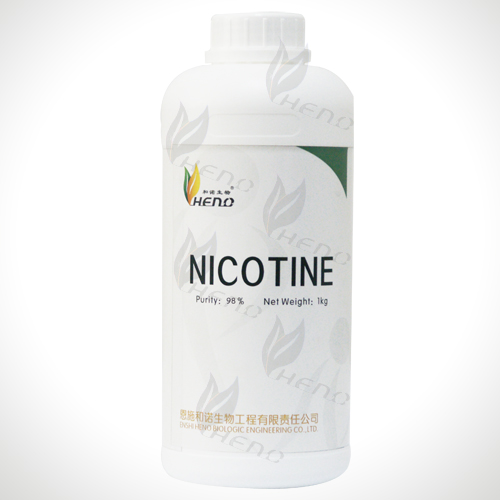 E-liquid nicotine grondstof productie
E-liquid nicotine grondstof productieENSHI HENO BIOLOGICA ENGINEERING CO., LTD gelegen in Enshi Tujia & Miao autonome prefectuur, de mysterieuze latitude 30 graden over het hele Enshi, is het recht van "E Xi Linhai" , "Centraal China Drug pakhuis," "tabak Koninkrijk", ENSHI HENO BIOLOGICA ENGINEERING CO., LTD werd opgericht in oktober 2010, is een verzameling van nicotine en derivaten productontwikkeling, productie en verkoop van high-tech bedrijven. Het bedrijf gericht op het onderzoek en de ontwikkeling van nicotine, met name hoge zuiverheid nicotine producten. productbeschrijving Engelse naam: Nicotine, L-nicotine planten Latijnse naam: Nicotiana tabacum L. CAS:54-11-5 International Code: 61868 analyse methode: HPLC moleculaire formule: C10H14N2 Chemischenaam: 1-methyl-2-(3-pyridyl) pyrrolidine uiterlijk : kleurloos en duidelijke formule gewicht: 162.23 verschijning: kleurloze, olieachtige vloeistof opslag: onder stikstof, in een luchtdichte container op 4℃ of onder, beschermd tegen licht. inhoud: 90% nicotine, nicotine van 95%, 98% nicotine, 99% nicotine, 99.5%nicotine,99.9%nicotine gerelateerde producten waarom HENO kiezen? 1. Eigenaar van een stabiele en professionele R & D team; 2. Nicotine is natuurlijke gewonnen uit afval tabaksplanten, dat is een goede manier te recyclen van afval. 3. Onze pure nicotine 99,9% kan bereiken, voldoet aan standaard USP. 4. Zelf de ervaring om te exporteren van nicotine legaal. 5:Test rapport en certificaat verleden TRANSACTIEGEGEVENS voorwaarden en omstandigheden betaling: T/T levertijd : producten worden verstuurd in 2 werkdagen na ontvangst van volledige betaling. MOQ:1 L verpakking: gefluoreerde fles opslag: onder stikstof 4-5 graden en avoide sunshine onze SERIVICES 1:Samples: gratis 2:OEM : afdrukken aangepast 3:documents: spier-en skeletaandoeningen, USP verslag, certificering voor veilig vervoer van chemische goederen. hoge zuiverheid nicotine, tabak absolute, organisch selenium samengestelde microbiële meststoffen is ons belangrijkste product, sterke o & o ondersteuning, hoge kwaliteit, redelijke prijs, snelle levering vermogen en kwaliteit van de dienstverlening, zodat vele binnenlandse en buitenlandse bedrijven om een goed partnerschap voor ons, en in de markt een goede reputatie opgebouwd , zoals de Verenigde Staten, Korea, Polen, Engeland, Frankrijk en anderen. Heno mensen aandringen op de hulplijn van kwaliteit eerst, eerlijkheid-georiënteerd. , en streven naar de beste producten en diensten, bevorderen de continue ontwikkeling van Chinese biotechnologie. voor de beste e-liquid fabrikanten wij de beste nicotine bieden! HENO nicotine is uw beste keus! harte welkom om contact met ons op!
-
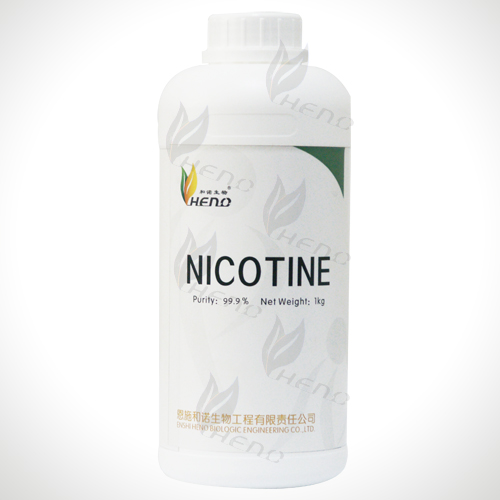 HENO biologische ≥99.5 pure nicotine vloeibare leverancier
HENO biologische ≥99.5 pure nicotine vloeibare leverancierENSHI HENO BIOLOGICA ENGINEERING CO., LTD gelegen in Enshi Tujia & Miao autonome prefectuur, de mysterieuze latitude 30 graden over het hele Enshi, is het recht van "E Xi Linhai" , "Centraal China Drug pakhuis," "tabak Koninkrijk", ENSHI HENO BIOLOGICA ENGINEERING CO., LTD werd opgericht in oktober 2010, is een verzameling van nicotine en derivaten productontwikkeling, productie en verkoop van high-tech bedrijven. Het bedrijf gericht op het onderzoek en de ontwikkeling van nicotine, met name hoge zuiverheid nicotine producten. productbeschrijving Engelse naam: Nicotine, L-nicotine planten Latijnse naam: Nicotiana tabacum L. CAS:54-11-5 International Code: 61868 analyse methode: HPLC moleculaire formule: C10H14N2 Chemischenaam: 1-methyl-2-(3-pyridyl) pyrrolidine uiterlijk : kleurloos en duidelijke formule gewicht: 162.23 verschijning: kleurloze, olieachtige vloeistof opslag: onder stikstof, in een luchtdichte container op 4℃ of onder, beschermd tegen licht. inhoud: 90% nicotine, nicotine van 95%, 98% nicotine, 99% nicotine, 99.5%nicotine,99.9%nicotine gerelateerde producten waarom HENO kiezen? 1. Eigenaar van een stabiele en professionele R & D team; 2. Nicotine is natuurlijke gewonnen uit afval tabaksplanten, dat is een goede manier te recyclen van afval. 3. Onze pure nicotine 99,9% kan bereiken, voldoet aan standaard USP. 4. Zelf de ervaring om te exporteren van nicotine legaal. 5:Test rapport en certificaat verleden TRANSACTIEGEGEVENS voorwaarden en omstandigheden betaling: T/T levertijd : producten worden verstuurd in 2 werkdagen na ontvangst van volledige betaling. MOQ:1 L verpakking: gefluoreerde fles opslag: onder stikstof 4-5 graden en avoide sunshine onze SERIVICES 1:Samples: gratis 2:OEM : afdrukken aangepast 3:documents: spier-en skeletaandoeningen, USP verslag, certificering voor veilig vervoer van chemische goederen. hoge zuiverheid nicotine, tabak absolute, organisch selenium samengestelde microbiële meststoffen is ons belangrijkste product, sterke o & o ondersteuning, hoge kwaliteit, redelijke prijs, snelle levering vermogen en kwaliteit van de dienstverlening, zodat vele binnenlandse en buitenlandse bedrijven om een goed partnerschap voor ons, en in de markt een goede reputatie opgebouwd , zoals de Verenigde Staten, Korea, Polen, Engeland, Frankrijk en anderen. Heno mensen aandringen op de hulplijn van kwaliteit eerst, eerlijkheid-georiënteerd. , en streven naar de beste producten en diensten, bevorderen de continue ontwikkeling van Chinese biotechnologie. voor de beste e-liquid fabrikanten wij de beste nicotine bieden! HENO nicotine is uw beste keus! harte welkom om contact met ons op!
-
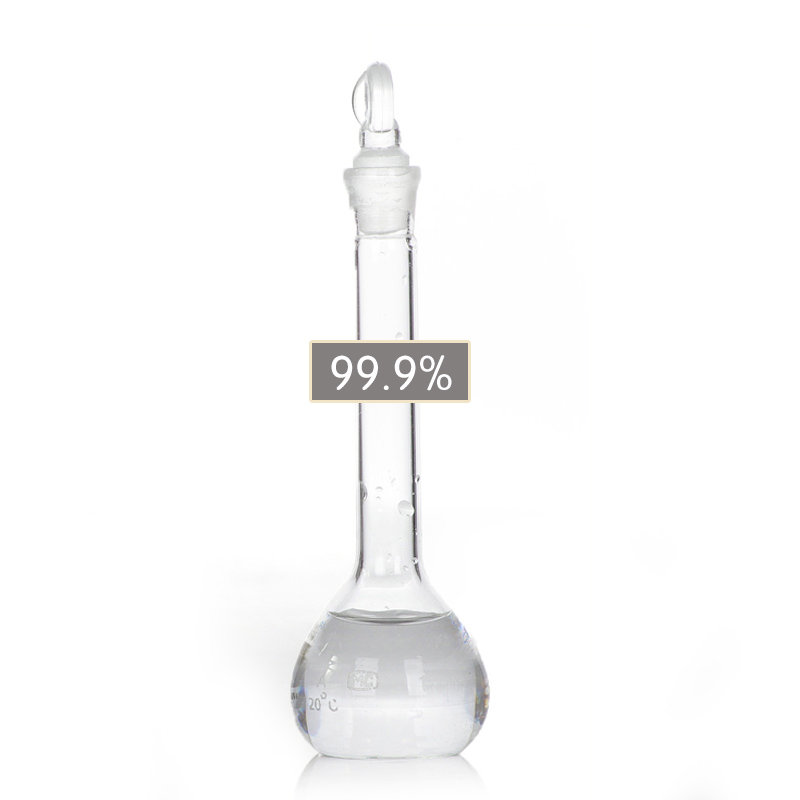 ISO 99.9%pure nicotine producten producent
ISO 99.9%pure nicotine producten producentENSHI HENO BIOLOGICA ENGINEERING CO., LTD gelegen in Enshi Tujia & Miao autonome prefectuur, de mysterieuze latitude 30 graden over het hele Enshi, is het recht van "E Xi Linhai" , "Centraal China Drug pakhuis," "tabak Koninkrijk", ENSHI HENO BIOLOGICA ENGINEERING CO., LTD werd opgericht in oktober 2010, is een verzameling van nicotine en derivaten productontwikkeling, productie en verkoop van high-tech bedrijven. Het bedrijf gericht op het onderzoek en de ontwikkeling van nicotine, met name hoge zuiverheid nicotine producten. productbeschrijving Engelse naam: Nicotine, L-nicotine planten Latijnse naam: Nicotiana tabacum L. CAS:54-11-5 International Code: 61868 analyse methode: HPLC moleculaire formule: C10H14N2 Chemischenaam: 1-methyl-2-(3-pyridyl) pyrrolidine uiterlijk : kleurloos en duidelijke formule gewicht: 162.23 verschijning: kleurloze, olieachtige vloeistof opslag: onder stikstof, in een luchtdichte container op 4℃ of onder, beschermd tegen licht. inhoud: 90% nicotine, nicotine van 95%, 98% nicotine, 99% nicotine, 99.5%nicotine,99.9%nicotine gerelateerde producten waarom HENO kiezen? 1. Eigenaar van een stabiele en professionele R & D team; 2. Nicotine is natuurlijke gewonnen uit afval tabaksplanten, dat is een goede manier te recyclen van afval. 3. Onze pure nicotine 99,9% kan bereiken, voldoet aan standaard USP. 4. Zelf de ervaring om te exporteren van nicotine legaal. 5:Test rapport en certificaat verleden TRANSACTIEGEGEVENS voorwaarden en omstandigheden betaling: T/T levertijd : producten worden verstuurd in 2 werkdagen na ontvangst van volledige betaling. MOQ:1 L verpakking: gefluoreerde fles opslag: onder stikstof 4-5 graden en avoide sunshine onze SERIVICES 1:Samples: gratis 2:OEM : aangepast afdrukken 3:documents: spier-en skeletaandoeningen, USP verslag, certificering voor veilig vervoer van chemische goederen. hoge zuiverheid nicotine, tabak absolute, organisch selenium samengestelde microbiële meststoffen is ons belangrijkste product, sterke o & o ondersteuning, hoge kwaliteit, redelijke prijs, snelle levering vermogen en kwaliteit van de dienstverlening, zodat vele binnenlandse en buitenlandse bedrijven om een goed partnerschap voor ons, en in de markt een goede reputatie opgebouwd , zoals de Verenigde Staten, Korea, Polen, Engeland, Frankrijk en anderen. Heno mensen aandringen op de hulplijn van kwaliteit eerst, eerlijkheid-georiënteerd. , en streven naar de beste producten en diensten, bevorderen de continue ontwikkeling van Chinese biotechnologie. voor de beste e-liquid fabrikanten wij de beste nicotine bieden! HENO nicotine is uw beste keus! harte welkom om contact met ons op!






















